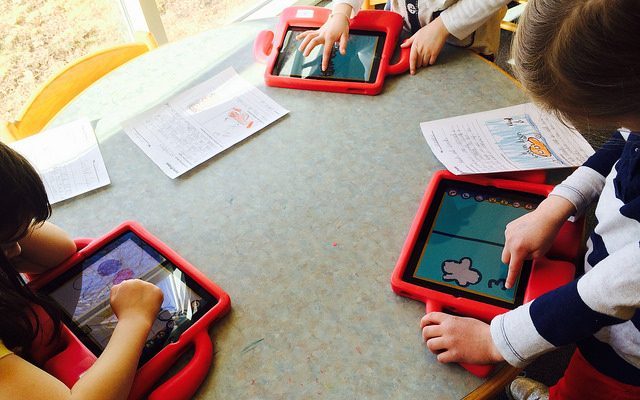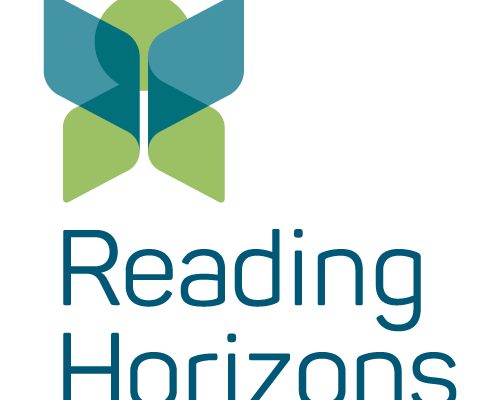Increasing Engagement in Math Through Choice (and Comics!)

An elementary teacher explains how she helps students take control of their own learning by collaborating, creating comics, and voting on which lessons worked best.
By Dana Meyer
Student choice is an effective avenue for increasing student ownership in learning and is highly beneficial in helping students make a deeper commitment to learning complex content. Because math comprises so many avenues of knowledge, choice can reduce the stress or anxiety surrounding a student’s mastery of those skills. Choice in math permits students an expression of control in their own learning, warranting such benefits as differentiation, self-pacing, and learning driven by interest rather than obligation. Choice can help pique interest and fuel motivation and engagement to learn new math concepts.
It is not always clear how to give students choice in a math class, however. By its very nature, math is dichotomous: the answer is either right or wrong. This implies very little room for voice. However, I believe the new approach of solving through multiple strategies, rather than a singular “right” way, has helped pave the way for diverse voices and perspectives to emerge. For example, in my class, when a student is solving a problem on the board, the goal is not simply to get the right answer. Rather, the goal is for students to dig deep, push their brains, and produce as many valid methods as they can to arrive at the solution. And the best lightbulb moments to witness are ones in which students enlighten one another to new problem-solving strategies.
Ultimately, introducing choice to the math class can be as simple as letting students choose the order in which they complete the day’s worksheets, or as fun as having them design their own board game to reinforce news skills they have just learned. Here are a few ways I work to give students more choice in my math classes.
Assessment Options
Assessment may seem like the last place to give students choice, but if the goal is to see what they have learned and where they still need support, allowing them to demonstrate their learning in any way they feel comfortable is likely to give you a better read on their abilities. I like to give them lots of options.
For example, students may complete a problem on their whiteboards and hold it up for me to conduct a quick-check of their understanding of a math concept. Or, they may complete an exit ticket to demonstrate their knowledge from that day’s new learning. Sometimes we do a “quicksort” on Google Jamboard, where students have to drag and drop shapes or sticky-note concepts into the correct category, such as polygons versus non-polygons or the most appropriate unit to measure a certain object.
One of our favorite checks for understanding, introduced to me by a colleague, is “Math Scribe.” I provide a problem on the board and one student volunteers to be the scribe. They stand at the front board and call on various other students to orate each step of solving the problem while they scribe. That way, the problem-solving becomes a team effort, numerous perspectives are shared, and I, as the teacher, am able to see who is understanding the new concepts.
Creating Comics
Using comics is another of my favorite methods of checking understanding. One of the first ways I used comics in a math class was as an assessment. I gave students the choice to explain through their comic strip how to find an equivalent fraction or how to place a fraction on a number line. For comics I use a program called Pixton, which is so simple to use that students are creating comics within minutes.
We often use Pixton a lot like we would use a whiteboard, but our online avatars help bring the math to life. For example, I may ask my students to demonstrate how we can convert between units of measurement, such as ounces and pounds. Instead of giving them a problem to solve rotely on their whiteboards, I ask them to come up with their own real-life problem using comics. The learning thereafter proves much more valuable than whiteboard practice, because the children become actively engaged in their work, and interact with a problem from its conception to its solution. Then, part of the activity becomes the sharing process, where they can show their unit-conversion comics to one another, try to solve each other’s posed math problems, and enjoy the ease of access that visuals provide in comprehending word problems.
Comics can be a particularly powerful choice for English learners (ELs) or other students dealing with a language barrier. Oftentimes, one of my ELs would simply write the answer on his paper without showing his work. Because of the language barrier, he had trouble explaining his thinking. His solutions would always be slightly off, and without the written or verbal explanation, I could not track where he had erred. However, when we started using comics, this was all brought to light.
Comics are laid out in panels, which serve math problems well because students can demonstrate their progression through each step of problem-solving. Only once my student was able to lay out his problem-solving in panels, illuminating each step of his strategy, was I able to see exactly where his misconception had misled him. Through the universal language of images, my student was able to express the thinking in a way he could not in writing or speaking, and I was able to reteach the strategy to him.
Project-Based Learning
I love having students design their own board games to rehearse and reinforce their learning of new concepts. Not only do they become invested because the project is of their own making, but they become engaged through the opportunity to play others’ games.
That said, I think the ultimate way choice can be manifested in math class is through project-based learning (PBL), or even smaller-scale inquiry tasks. I like to have students identify a real-life problem that matters to them, and which can be solved with math. Using PBL or inquiry tasks can help to empower those students who may struggle to access standard problem-solving exercises in class.
In one recent example, I asked students to plan a party for themselves and 9 friends. They were given a budget of $100 and a stack of Market Basket magazines, and asked to apply their new decimal-adding knowledge to figure out their perfect menu within budget. This required real-life problem-solving, including calculating special deals (e.g. 3 for $5) and adding their total, and it even factored in nutritional knowledge by requiring them to prepare a well-balanced meal.
Creative instructional routes foster an academic space in which individual expression and personal interest drive the learning process. I find even my most disengaged and apathetic students jumping into action because, to them, getting to choose their own problem to solve is so personally intriguing that they hardly realize they are doing math to solve it. Effectively, math becomes the vehicle that allows them to arrive at their goal.
Taking Time to Reflect
Ultimately, I think there are two pieces to student choice in the classroom: autonomy in learning, and feedback and reflection.
Autonomy in learning can be nothing more than letting students choose a path. It can be as simple as giving them a choice between creating a presentation or drawing a comic.
Feedback and reflection is just as important. Once a week, we hold Democracy Fridays, when I poll students to ask how an activity went or how they would have done an activity differently. I also have a little jar in my classroom called “Musings for Mrs. Meyer” where students can offer suggestions for improvement or things they would like to start doing.
The second students feel that their teacher not only hears them, but values and puts their ideas into action, they feel empowered to learn. We just need to make sure we are giving them the tools they need and guiding their learning.
Dana Meyer teaches 4th grade at Burbank Elementary School. She can be reached at [email protected].




